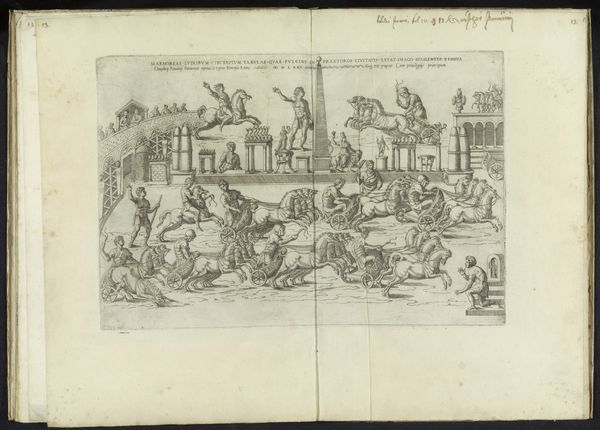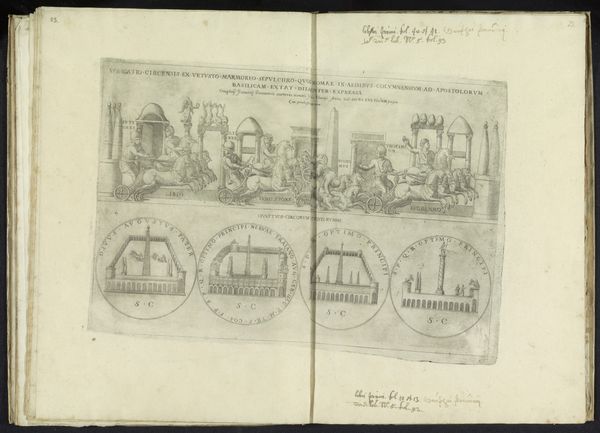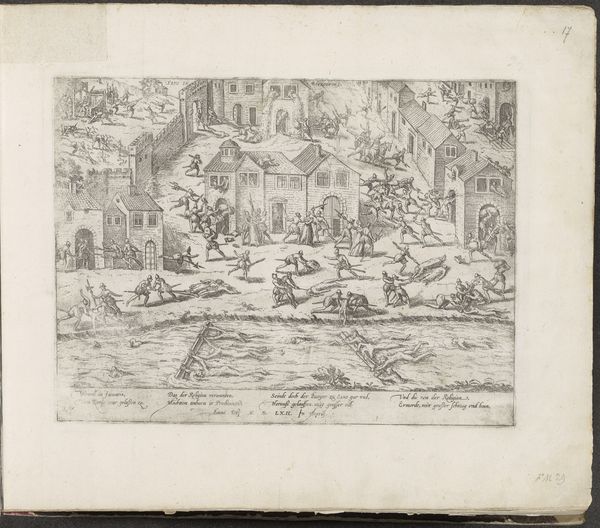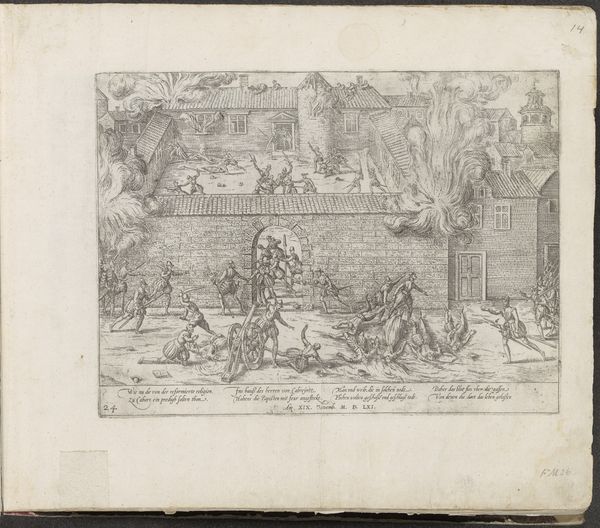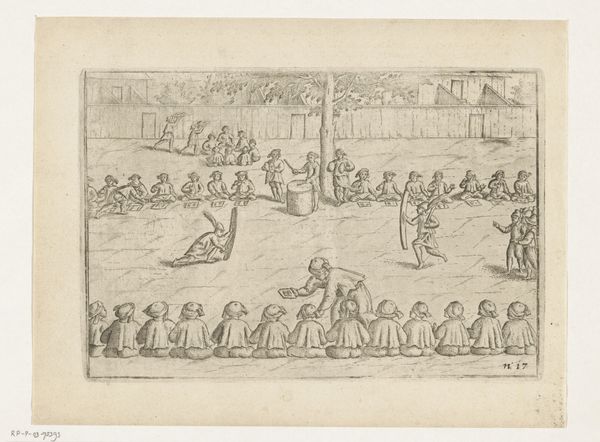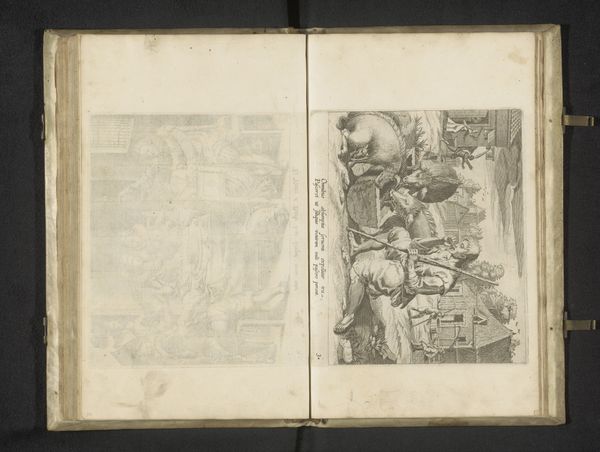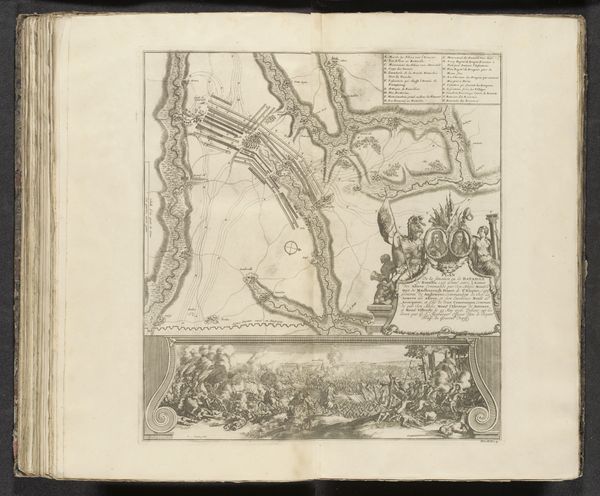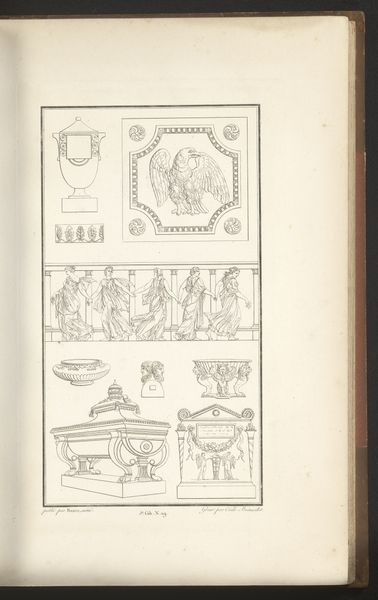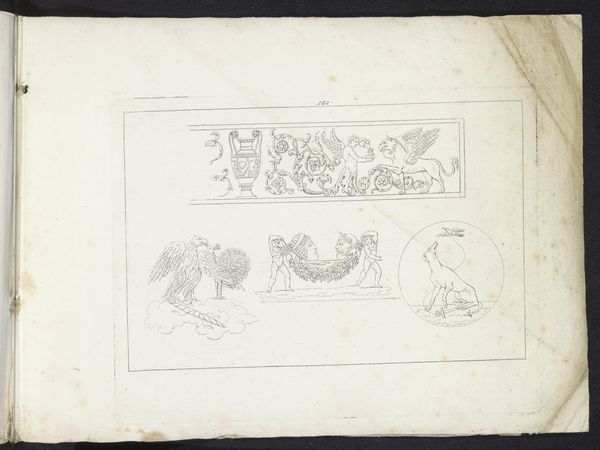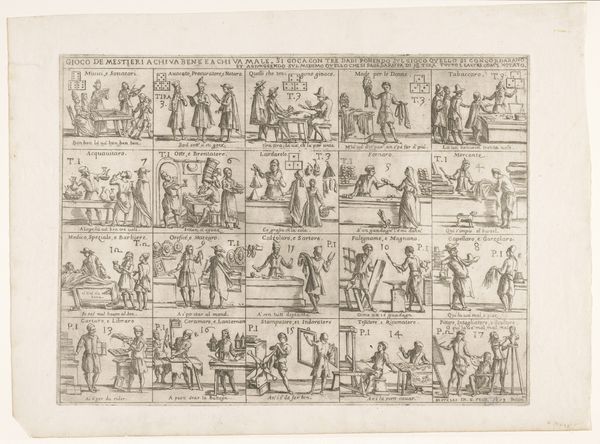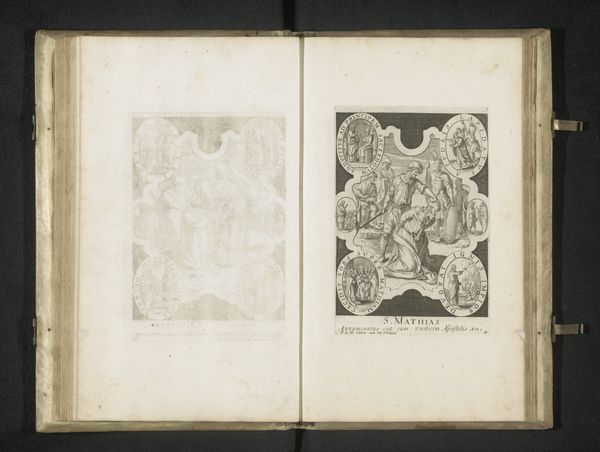
drawing, paper, ink
#
drawing
#
mannerism
#
figuration
#
paper
#
11_renaissance
#
ink
#
history-painting
Dimensions: height 259 mm, width 385 mm
Copyright: Rijks Museum: Open Domain
Curator: This intriguing image, created around 1580 by Onofrio Panvinio, is titled “Putti als wagenmenners”, or “Putti as Charioteers.” It’s rendered in ink on paper, and seems to depict scenes related to chariot racing, with putti or cherubic figures acting as the drivers. Editor: The sketchiness immediately gives it a dynamic, almost frantic energy. The compositions are fascinating - crowded and a bit unsettling with these cherubic figures wielding such power. What's the story it's trying to tell, politically and culturally? Curator: It's worth situating Panvinio within the cultural milieu of the late Renaissance. There was intense interest in classical antiquity at that time, so scenes related to classical events and figures are quite commonplace. It is highly likely he was influenced by this social and cultural environment, which would explain his theme and his employment of figuration, particularly with the “Putti as Charioteers.” Editor: And I would suggest that these images present conflicting signals, these babies seemingly controlling such massive power…How were people intended to read that? Was Panvinio attempting to disrupt a system through this juxtaposition, a means of engaging in identity politics, perhaps? I'm struck by what this may mean relative to the way that power, historically, has been centralized. Curator: It’s possible to view these charioteers as symbols, drawing parallels between religion, philosophy, and Roman governance. Perhaps his intended audience in the church understood the relevance in late Renaissance Rome, I’m less certain that Panvinio himself did, based on our sources and documentation of his intent. He may have simply been influenced by the tastes of his patron at the time. Editor: That makes me think about the institution itself, in terms of its gatekeepers. It goes to show just how significantly that affects whose narratives are lifted, and which ones are, instead, lost in time, given he seems to be in favor of "gatekeeping". Curator: Indeed. Context informs everything when we look at a piece. Even a seemingly straightforward sketch offers a window into a whole world of power dynamics and artistic choices. Editor: I appreciate that your focus on the social framework provides an opening to analyze its power structures more comprehensively. It allows us to see Panvinio, his audience, and perhaps the very purpose behind the sketch through fresh eyes.
Comments
No comments
Be the first to comment and join the conversation on the ultimate creative platform.
